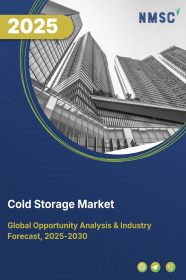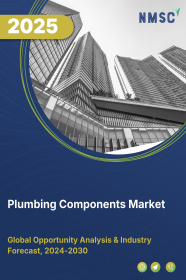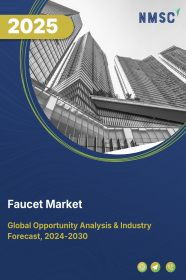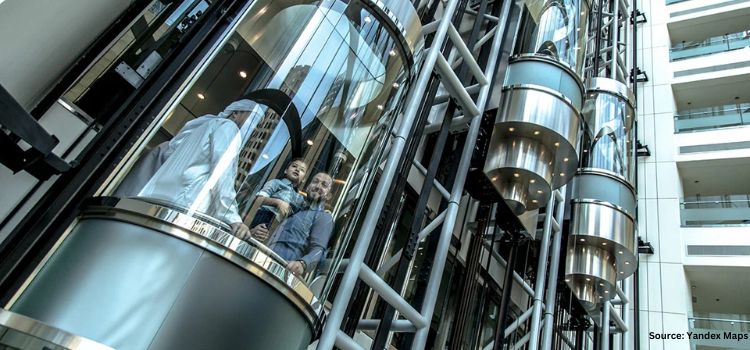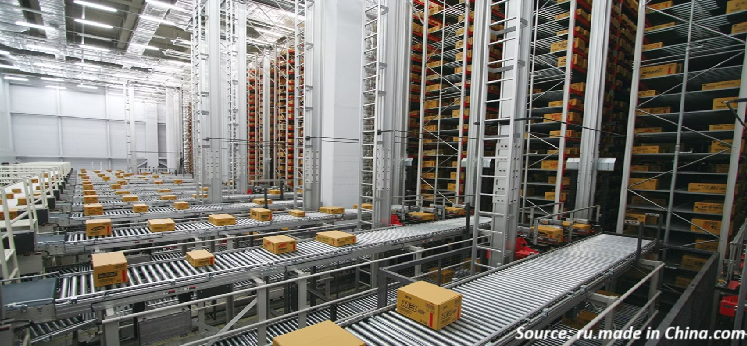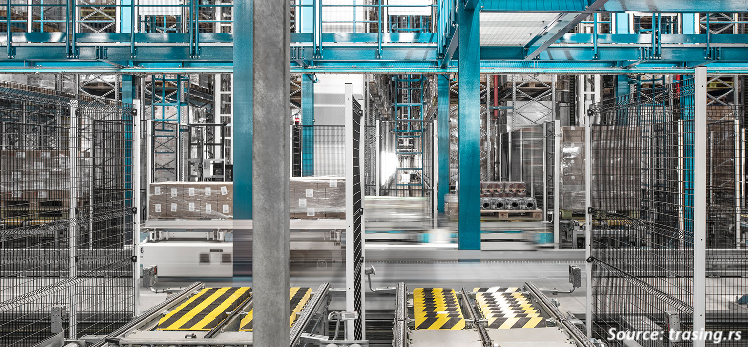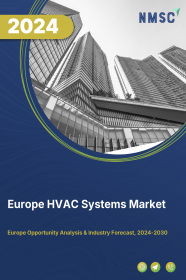
Europe HVAC Systems Market by Equipment (Cooling Equipment, Heating Equipment, and Ventilation), by Implementation Type (New Construction and Retrofit), and by End User (Residential, Commercial, and Industrial) - Opportunity Analysis and Industry Forecast, 2024– 2030
Industry: Construction & Manufacturing | Publish Date: 13-Nov-2024 | No of Pages: 169 | No. of Tables: 124 | No. of Figures: 89 | Format: PDF | Report Code : CM1915
US Tariff Impact on Europe HVAC Systems Market
Trump Tariffs Are Reshaping Global Business
Market Definition
The Europe HVAC System Market size was valued at USD 40.95 billion in 2023, and is predicted to reach USD 58.49 billion by 2030, at a CAGR of 4.7% from 2024 to 2030.
HVAC (Heating, Ventilation, and Air Conditioning) refers to the technology and systems used in buildings to regulate indoor environmental conditions such as temperature, humidity, and air quality to ensure comfort and safety for occupants. Heating systems provide warmth during colder months, ventilation systems circulate and replenish indoor air, and air conditioning systems cool and dehumidify indoor air during warmer months.
HVAC systems offer several advantages, including improved occupant comfort and health, increased energy efficiency leading to cost savings, better indoor air quality through filtration and ventilation, precise temperature control for enhanced productivity in commercial settings, and protection of building infrastructure from extreme weather conditions. Additionally, these systems can be designed to meet specific requirements, contributing to sustainability goals by reducing carbon emissions and promoting eco-friendly practices in building operations.
Rising Urbanization and Construction Trends Propels the Market Expansion
Urbanization and construction trends play pivotal roles in driving growth within the HVAC industry. The burgeoning urban population fuels an increased demand for HVAC systems across various structures, spanning residential, commercial, and industrial sectors such as apartments, office complexes, shopping centers, and factories.
Concurrently, there is a noticeable shift in construction methodologies towards sustainability and energy efficiency, driven by green building initiatives mandated by governments and spurred by environmental concerns. These initiatives necessitate stringent HVAC standards in new constructions, thereby fostering a market for environmentally-friendly solutions.
Furthermore, the trend towards renovating and retrofitting existing buildings amplifies the need for HVAC upgrades, aligning with contemporary energy-saving technologies. The integration of HVAC systems with building automation and smart technology further augments building performance and energy efficiency, underscoring the pivotal role played by urbanization and construction trends in propelling the growth of the HVAC industry.
Growing Demand for Improved Indoor and Outdoor Air Quality Drive the HVAC System Market
The growing demand for improved indoor and outdoor air quality drives the HVAC system market. The increasing awareness regarding the importance of air quality is compelling both residential and commercial property owners to invest in HVAC systems that can effectively filter and purify indoor air while minimizing outdoor emissions.
As a result, there is a rising demand for advanced HVAC systems equipped with modern filtration technologies, such as HEPA filters and UV-C light sterilization that can eliminate pollutants, allergens, and pathogens from indoor air. This trend is driving HVAC manufacturers to innovate and develop new solutions that prioritize air quality improvement, thereby fueling the growth of the HVAC system market.
Price Volatility of Raw Materials Restrains the Growth of the HVAC system Market
The surge in raw material expenses, fueled by inflation and supply chain disruptions, poses challenges to the manufacturing costs associated with HVAC systems. The heightened costs of fundamental raw materials such as steel, copper, and aluminum significantly elevate production expenses for HVAC manufacturers.
Consequently, small and mid-scale HVAC enterprises encounter margin constraints, affecting profitability and restricting investments in research and development. This, in turn, constrains market expansion.
Integration of Solar-Powered HVAC Systems Creates Opportunity Growth for the Market
Solar-powered HVAC systems, utilizing photovoltaic technology to harness solar energy for heating, ventilation, and air conditioning operations, offer a promising avenue for market expansion within the HVAC industry.
These systems, installed with solar panels atop rooftops or designated areas, significantly reduce reliance on grid electricity, leading to substantial energy cost savings for consumers. With advancements in solar panel efficiency, energy storage, and system integration, solar-powered HVAC solutions are becoming increasingly feasible and economically viable.
Moreover, by reducing carbon emissions and promoting sustainability, these systems align with growing environmental concerns and regulatory initiatives worldwide, further driving market demand. As businesses and homeowners seek energy-efficient and environmentally friendly alternatives, the adoption of solar-powered HVAC systems presents a compelling opportunity for market growth, fostering innovation and investment in renewable energy technologies within the HVAC sector.
Germany Holds the Dominant Market Share in Europe HVAC System Market
Urbanization and construction trends emerge as pivotal growth drivers within the HVAC industry. The burgeoning urban population necessitates an increased demand for HVAC systems across diverse structures, including residential, commercial, and industrial establishments such as apartments, office complexes, shopping centers, and factories.
Simultaneously, there is a discernible shift in construction methodologies towards sustainability and energy efficiency, propelled by green building initiatives mandated by governments and driven by environmental concerns.
These initiatives mandate stringent HVAC standards in new constructions, thereby fostering a market for eco-friendly solutions. Furthermore, the trend towards renovating and retrofitting existing buildings amplifies the need for HVAC upgrades, aligning with contemporary energy-saving technologies.
The integration of HVAC systems with building automation and smart technology further elevates building performance and energy efficiency, underscoring the pivotal role played by urbanization and construction trends in driving the growth trajectory of the HVAC industry.
The surging demand for improved indoor and outdoor air quality serves as a significant catalyst driving the growth of the HVAC system market. Heightened awareness regarding the critical importance of air quality motivates both residential and commercial property owners to invest in HVAC systems capable of efficiently filtering and purifying indoor air while reducing outdoor emissions.
Consequently, there is a growing preference for advanced HVAC systems equipped with cutting-edge filtration technologies including HEPA filters and UV-C light sterilization, aimed at eliminating pollutants, allergens, and pathogens from indoor spaces. This emerging trend prompts HVAC manufacturers to innovate and introduce new solutions aimed at enhancing air quality, thereby propelling the expansion of the HVAC system market.
Norway to Witness Substantial Growth in the Europe HVAC System Market
The presentation of residential energy-saving regulations acts as a significant catalyst for the HVAC system market's expansion. These regulations drive market growth by necessitating the utilization of increasingly energy-efficient systems, prompting manufacturers to develop compliant HVAC units.
This compels consumers to seek out energy-saving HVAC systems to meet regulatory mandates and minimize energy costs. Additionally, these regulations heighten homeowners' awareness of the benefits associated with energy-efficient HVAC systems, leading to a surge in demand for such products. This surge in demand prompts manufacturers to innovate and diversify their product ranges to cater to the growing market demands, thereby further stimulating the demand for energy-efficient HVAC systems.
Environmental concerns play a pivotal role in driving growth within the HVAC systems industry. With increased awareness of issues such as climate change, air pollution, and ozone depletion, there's mounting pressure for sustainable practices and regulations. Governments worldwide enforce mandates to reduce the environmental impact of HVAC systems, leading to the development and adoption of eco-friendly technologies.
Manufacturers invest in research and development to create systems using alternative refrigerants with lower global warming potential and enhance energy efficiency. Consumer demand for energy-efficient solutions aligns with regulatory goals, stimulating the market for high-efficiency HVAC equipment.
Moreover, the emphasis on indoor air quality (IAQ) fosters innovation in filtration, ventilation, and purification technologies. This concerted effort towards sustainability not only addresses environmental concerns but also drives market growth by meeting the evolving needs of stakeholders while creating healthier indoor environments.
Competitive Landscape
The market players operating in the Europe HVAC System market include Midea Group Co Ltd, Daikin Industries Ltd., Gree Electric Appliances Inc., Johnson Controls International Plc., Carrier Global Corporation, Samsung Electronics Co., Ltd., Trane Technologies Plc., LG Electronics Inc., Panasonic Holdings Corporation, Lennox International Inc. and others.
Europe HVAC System Market Key Segments
By Equipment
-
Cooling Equipment
-
Unitary Air Conditioners
-
Variable Refrigerant Flow Systems (VRF)
-
Chillers
-
Room Air Conditioners
-
Coolers
-
Cooling Towers
-
-
Heating Equipment
-
Heat Pumps
-
Furnaces
-
Unitary Heaters
-
Boilers
-
-
Ventilation
-
Air-handling Units (AHUs)
-
Air Filtration Systems
-
Ventilation Fans
-
HRVs & ERVs
-
Air Purification Systems
-
Others
-
By Implementation Type
-
New Construction
-
Retrofit
By End User
-
Residential
-
Commercial
-
Industrial
By Country
-
The UK
-
Germany
-
France
-
Italy
-
Spain
-
Denmark
-
Netherlands
-
Finland
-
Sweden
-
Norway
-
Rest of Europe
REPORT SCOPE AND SEGMENTATION:
|
Parameters |
Details |
|
Market Size in 2023 |
USD 40.95 Billion |
|
Revenue Forecast in 2030 |
USD 58.49 Billion |
|
Growth Rate |
CAGR of 4.7% from 2024 to 2030 |
|
Analysis Period |
2023–2030 |
|
Base Year Considered |
2023 |
|
Forecast Period |
2024–2030 |
|
Market Size Estimation |
Billion (USD) |
|
Growth Factors |
|
|
Countries Covered |
12 |
|
Companies Profiled |
10 |
|
Market Share |
Available for 10 companies |
|
Customization Scope |
Free customization (equivalent up to 80 working hours of analysts) after purchase. Addition or alteration to country, regional, and segment scope. |
|
Pricing and Purchase Options |
Avail customized purchase options to meet your exact research needs. |
KEY PLAYERS
-
Midea Group Co Ltd.
-
Daikin Industries Ltd.
-
Gree Electric Appliances Inc.
-
Johnson Controls International Plc.
-
Carrier Global Corporation
-
Samsung Electronics Co., Ltd.
-
Trane Technologies Plc.
-
LG Electronics Inc.
-
Panasonic Holdings Corporation
-
Lennox International Inc.

















 Speak to Our Analyst
Speak to Our Analyst



